Tools to boost productivity are getting heavier and heavier, and therefore require a host of new solutions to preserve yields and prevent excessive compaction.
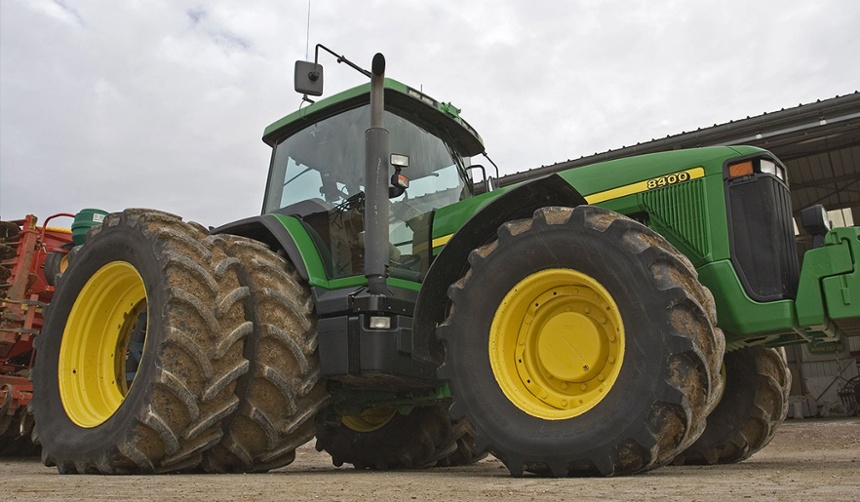 There are two well-known solutions that can preserve the soil and enable the use of heavier tools: low-pressure VF tyres and twinned tractor tyres.
There are two well-known solutions that can preserve the soil and enable the use of heavier tools: low-pressure VF tyres and twinned tractor tyres.
But what's the most effective solution?
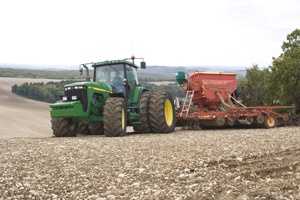
A solution for carrying very heavy tools
A real solution for bearing very heavy loads: the load will be distributed across all tyres and therefore the weight is split between each tyre. This means that, in terms of weight distribution on the ground, twinning benefits from the largest possible contact surface area, especially if you use twinned wheels in the front as well as the rear.
And if dual agricultural tyres are mounted on each wheel, the tractive force will be greatly increased up to 130%, and with minimal slip.
But remember, for optimum efficacy the twinned tyres should all be the same size, as this way they will all respond identically for improved control over the tractor. If the tyres are different sizes, they will respond differently and twinning will be less effective.
Even low-cost or budget agricultural tyres can grant you the same advantages when twinned, provided they are inflated to the correct pressure as recommended by the manufacturer based on the terrain you will be driving over.
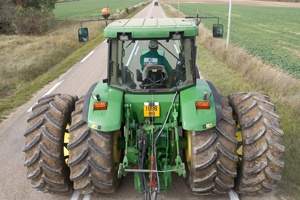
What are the advantages and inconvenients?
The drawbacks of twinning are the mounting/dismantling times and the amount of space your tractor takes up if you need to drive on a road.
This may be problematic, because road traffic regulations are not always favourable to wide vehicles.
Moreover, twinning is best suited for working on bare earth given that it's more damaging to crops.
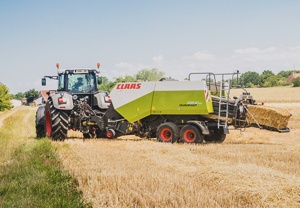
the almost inexistent footprint
They're a technological miracle. When testing the footprint of these low-pressure tyres on the soil, it was observed that there was almost zero compaction of the deeper layers because the sidewalls are able to deform considerably, better distributing the weight over a larger contact surface area. Their reinforced structure gives them greater resistance and therefore a longer life span.
These VF tyres allow for 35-40% higher loads, meaning heavier tools can be used with no adverse effect on the soil. The casing of VF tyres decreases the pressure by 40% at 50 km/h, even all the way down to 0.8 bar, whereas a standard agricultural tyre cannot go below 1.2 bar.
The drawback that's mentioned time and time again is the price of this tyre technology. However, the cost of buying this agricultural tyre new is mostly made back during use, through the fuel savings it achieves on a day-to-day basis.
When used at a low pressure, this tractor tyre has a better grip and traction, with all of the lugs used across the width of the tyre without sinking into the ground. There is almost never any slip with this type of tyre.
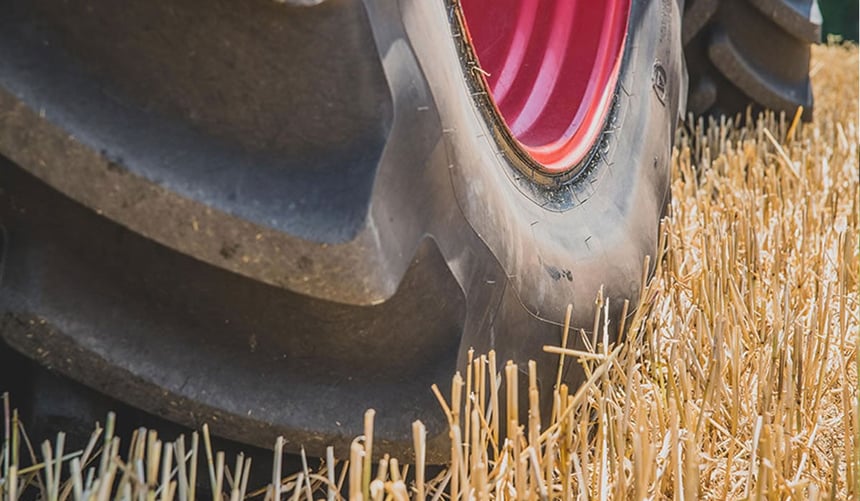
Soil compaction may appear like a secondary concern, and yet excessive compaction reduces yields by an average of 4% a year on a standard plot of land.
That might seem acceptable, but added up over many years it means your plot will slowly become unproductive and unprofitable.
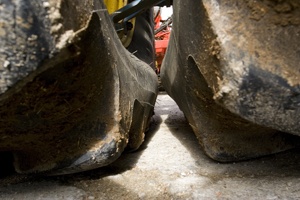 By twinning together two low-pressure tyres, you will enjoy the best of both worlds – maximum load capacity for very heavy tools and minimal soil compaction, and therefore assured future yields.
By twinning together two low-pressure tyres, you will enjoy the best of both worlds – maximum load capacity for very heavy tools and minimal soil compaction, and therefore assured future yields.
Of course, such a scenario would also mean suffering from the drawbacks of both options – the cost of low-pressure tyres coupled with the size and assembly/dismantling times for twin tyres. But in reality, your productivity gain over the medium term will be enough for this to still be the most cost-effective solution for your farm.
To learn more and boost your farm's profits, Bridgestone Agriculture is offering you a free, detailed eBook that explains the essential role your agricultural tyres play in your productivity.
The most people who have read this article have also read the following articles, which are listed below in order of popularity:
This information is intended only to make you aware of the technical and functional aspects of agricultural tires and their use. It does not allow you to make a judgment or a definitive conclusion on a given problem. Only your agricultural tire expert is able to make a technical assessment and take a final decision, case by case.

BRIDGESTONE EUROPE NV/SA
AG department
Kleine Kloosterstraat 10
1932 Zaventem, Belgium
Our regional office:
Athena Drive, Tachbrook Park
Warwick CV34 6UX
United Kingdom